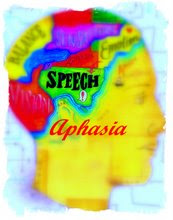TABLE OF CONTENTS
* Aphasia Speech Disorder: Understanding the Language of Aphasia
* A quick guide to the types of aphasia disorders
* Treatment - teaching aphasia sufferers to sing their way to speech
Treatment - teaching aphasia sufferers to sing their way to speech
Aphasia treatment. One of the most interesting therapies for aphasia is the process of patiently teaching aphasia sufferers to sing their way to speech.
The advantage of singing words rather than speaking them is that there is more time to think about a word you sing than there is to think about a word you speak. Singing words gives the person with aphasia a moment to rehearse the word he or she wants to express and to choose the right word.
In this method of treating aphasia, the therapist first teaches single-syllable words, tapping on the patient's hand as he or she speaks the word being taught. As the therapy progresses to multi-syllable words, the therapist uses just two pitches. Unstressed syllables are sung on the lower pitch, and stressed syllables are sung on the higher pitch. Gradually, the patient progresses from singing "food" to "water" to "go to the bathroom now." It may take weeks to teach just 20 to 100 words, but these will be the most important words and phrases for basic communication. In many cases, the patient will reach a point that singing is no longer necessary. The words will be spoken. In some cases, learning to sing is the first step to complete recovery of speech.
Aphasia awareness. In the United States, the National Aphasia Association names each June as Aphasia Awareness Month. The National Aphasia Association urges people to respect people with aphasia as adults—they may not have full fluency in speech, but their other mental processes are likely to be entirely intact. People who have aphasia should be addressed in simple, adult language, when the speaker is sure of having their attention, with a minimum of noise and distractions.
Give people with aphasia time to respond—and remember to include them in as many activities as possible. Including people with aphasia in social activities is enriching to them, and to the people they love.
read more
Sunday, February 27, 2011
Subscribe to:
Comments (Atom)


